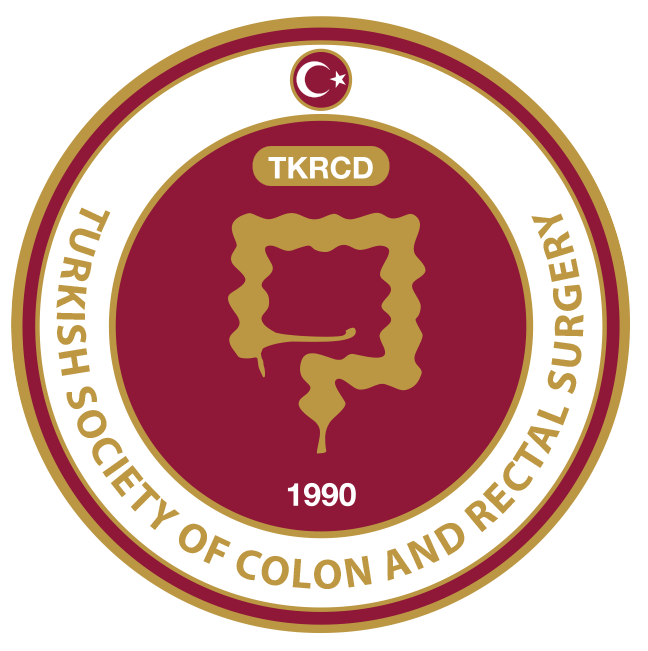ABSTRACT
Schwannomas are tumors originating from schwann cells in the nervous system. Colonic location is rarely seen and there are a few case reports published in the literature. We report a 53 year-old female who presented with abdominal pain, nausea, diarrhea ongoing for 2 years. Computer Tomography scan revealed a solid mass in size of 12.5x8 cm originating from the ascending colon and multiple lymphadenopathies in surrounding area. The patient underwent extended right hemicolectomy. The histopathological examination demonstrated a benign colonic schwannoma.Preoperative diagnosis of Colonic schwannoma seems to be difficult and usually schwannoma is diagnosed in the postoperative pathological examinations.
Introduction
Schwannomas are tumors originating from schwann cells in the nervous system.1 Schwannoma of the gastrointestinal tract is extremely rare.2 It is most commonly seen in the stomach and small intestines.3,4 Colonic localization is seen rare and there are a few case reports in the literature. High mitotic index, the size of tumor and Ki-67 index are used as malignancy features of schwannoma on pathological examination. Preoperative diagnosis is extremely difficult and patients are usually diagnosed after pathological examinations.
Case Report
A 53 year-old female applied to outpatient clinic with the complaints of abdominal pain, diarrhea and nausea ongoing for 2 years. The patient was previously diagnosed with diabetes mellitus and chronic hypertension and did not have any history of previous abdominal surgery. On physical examination, the patient had abdominal defense and suspicious intra-abdominal mass with palpation in the right lower quadrant. Laboratory results were found to be normal. Computer tomography (CT) scan revealed a solid mass in size of 12.5x8 cm originating from the ascending colon and multiple lymphadenopathies in surrounding area (Figure 1). There were no signs of solid organ metastasis or vascular invasion. The patient underwent total colonoscopy which demonstrated a narrowing in the lumen of the ascending colon resulting from the compression of a mass originating from colonic wall but not invading mucosa of the colon.
The patient was operated with the laparoscopic extended right hemicolectomy. The patient’s postoperative course was uneventful and was discharged on postoperative day 6. The histopathological examination demonstrated a benign colonic schwannoma in size of 12x8x7. Extracted lymph nodes from the specimen were found to be reactive. Immunohistochemical analysis showed that the tumor was diffuse positive with S-100, and negative with desmin, caldesmon, CD117, CD34 and SMA. The proliferation index for Ki-67 was lower than 1% and the number of mitosis was 1-2/50 (Figure 2, 3, 4). Upon these results no additional treatments were recommended to the patient.
Discussion
Schwannoma is a tumor derived from Schwann cells in neural crest and commonly localized in the myenteric plexus of the peripheric nervous system.1 Rarely, schwannomas can be originated from the myenteric plexus of the gastrointestinal system which are also classified as mesenchymal tumors. The incidence of schwannoma is 2-6% in gastrointestinal mesenchymal tumors and are most commonly located in the stomach (83%) and small intestines (12%).2,3,4
Colonic schwannoma is a rare tumor commonly reported as benign with a very low mitotic index and is frequently diagnosed as a submucosal mass or polyp.5 It is reported that colonic schwannomas are usually located in the right colon (30.2%) followed by sigmoid colon, rectum, left colon and transverse colon (Table 1). Although mucosal biopsies are often inconclusive because of its submucosal location, with deep submucosal biopsies or resections, schwannoma can be differentiated from other common submucosal gastrointestinal tumors such as gastrointestinal stromal tumors (GIST), leiomyomas and neuroendocrine tumors.3,6 However, GIST has a much more heterogeneous appearance on CT compared to schwannomas because of the presence of haemorrhage, necrosis, and cystic change, most of the schwannoma cases are diagnosed as GIST on CT scan.7,8
The definitive diagnosis is usually made with pathological result and immunohistochemical analysis of resected specimen.4 The differential diagnosis with GIST should carefully be made by using immunohistochemical analysis including S-100, CD117 and CD34. S-100 and GFAP are characteristically found to be positive in schwannoma, whereas CD117 and SMA are negative (Table 2).
Malignant gastrointestinal schwannomas are very uncommon and associated with poor prognosis.9 Malignancy features of schwannoma on pathological examination are high mitotic index, the size of tumor, high values of Ki-67 index than 10%, and the presence of hemorrhage, necrosis and ulceration on macroscopic examination.10
The prognosis of benign schwannomas was reported as excellent with complete resection of tumor and additional treatments are not recommended.11
Because of the schwannoma’s rare incidence, appropriate treatment following surgery has not been well-established and long-term results are unknown.



